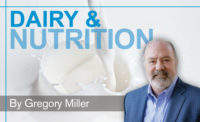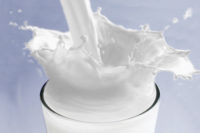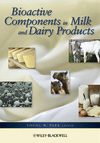The dairy difference in school lunches

Over half of the nation’s students participate in the National School Lunch Program (NSLP), which serves over 5 billion meals a year. That’s a lot of meals, providing the dairy community with a tremendous opportunity to ensure that the milk and dairy foods experience is maximized.
School meals have changed over the past two decades in response to the increase in overweight youth, as well as those living in food-insecure households. The Healthy, Hunger-Free Kids Act of 2010 put an even stronger emphasis on nutrition standards for school meals to help address these challenges.
Milk’s role in school
Milk long has been an integral part of federal school meals due to its nutrient package and health benefits. Milk is required by law to be offered with
school lunch. Under current regulations, which are based on the Dietary Guidelines for Americans (DGA), milk in the NSLP must be low-fat or fat-free. Only fluid milk is required to be offered with each school lunch, but other dairy foods such as cheese (often an ingredient in other dishes), yogurt and smoothies are served, too.
The NSLP typically provides more nutrition than lunches brought from outside the school lunch program. An evaluation of U.S. research studies from 2010-2015 found that elementary, middle and preschool packed lunches from home contained more calories, fat, saturated fat, desserts and sugar-sweetened beverages than school lunches.
Milk is part of the reason school lunches make the nutrition grade. Milk provides nine essential nutrients, including protein, calcium, vitamin D and phosphorus, which are important for bone growth and development. Additionally, of four nutrients identified by the DGA as under-consumed, milk is the No. 1 food source of three — calcium, potassium and vitamin D.
School meal programs
Children who participate in school meals programs — school lunch and breakfast — drink more milk and have better nutrient intakes than those who don’t eat school meals. As participation in school meals goes up, students eat more dairy foods, fruits, vegetables and whole grains. Being well nourished is also associated with characteristics of learning (e.g., paying attention and cognition).
All of this is brought to life with students through Fuel Up to Play 60 (www.fueluptoplay60.com), which is the in-school program created by National Dairy Council and the National Football League in cooperation with USDA. The program empowers students to “get active and play” for at least 60 minutes daily and “fuel up” with nutrient-rich foods.
School meals also offer the opportunity to showcase dairy’s attributes — from great-tasting ice-cold milk, smoothies and yogurt parfaits to the flavorful cheese that helps sandwiches and vegetables taste even better. The dairy experience at school can make a difference to kids’ overall dairy preferences now and in the future. Offering interesting flavors, textures and sizes, as well as innovative packaging, can help students form preferences for dairy foods in and out of school.
The School Breakfast and Afterschool Supper programs also offer opportunities for the dairy community to optimize the student experience with dairy. School Breakfast serves almost 2.5 billion meals, and After School Supper almost 1 million, with the potential to serve as many students as the NSLP. Find out more about dairy and school meals at NationalDairyCouncil.org.
Looking for a reprint of this article?
From high-res PDFs to custom plaques, order your copy today!









